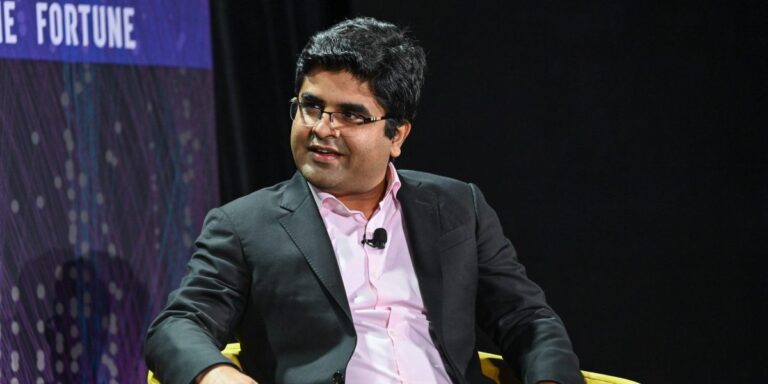In the middle of the 20th century, the world entered the age of information, the shift of industry to information technology. The era began with the miniaturization of computers and culminated with the invention of the World Wide Web, which put the ability to access information at nearly everyone’s fingertips. Now, with the rise of AI, that age is over, according to some tech leaders, and a new age of technology has begun.
“We have transitioned from [an] information era to intelligence era,” Prakhar Mehrotra, PayPal senior vice president and global head of AI, said at the Fortune Brainstorm AI conference earlier this month.
This “intelligence era” is marked by industries transitioning away from the model of storing and retrieving data, Mehrotra told Fortune reporter Sharon Goldman. Instead, because of the capabilities of AI, data can be more spontaneously generated, with the ultimate goal of achieving autonomy in some parts of the workplace.
Companies are racing to apply AI—with its promises of increased productivity and output—to their respective workplaces, but their successes have been mixed. An August MIT study found 95% of enterprise AI workplace initiatives failed to reach rapid revenue acceleration.
“It’s going to be a journey…You have to go through this crawl, walk, and run,” Mehrotra said. “I think that adage has been true 10 years back, is also true in this era.”
The future of AI factories
Marc Hamilton, Nvidia’s vice president of solutions architecture and engineering who was interviewed alongside Mehrotra at the conference, said the future of building out AI in the workplace will be investing in AI factories, on a business’s premises or in the cloud. That’s because data needed to run companies will no longer be primarily retrieved by humans or computers, but rather generated by AI.
“When you go and say, ‘Generate a PowerPoint slide that says this,’ or ‘I’m working on this coding function, can you go in and generate code?’ It’s not retrieving it from the database, it’s taking a model and generating that data,” Hamilton said.
Mehrotra noted in order for companies to effectively build out the computational power needed to create this data, there needs to be a new atomic unit prized by firms: tokens, or the fundamental component of text AI needs to understand and process a language. Tokens are both the snippet of information used to train data, as well as what is generated by AI after a model receives a prompt.
“Every company has to think about their data in terms of tokens, because then [they] can derive that intelligence from it,” Mehrotra said.
A measure of input and output, token generation has become a key metric for tech companies in particular. In May, Nvidia boasted that Microsoft, which uses Nvidia’s chips, generated more than 100 trillion tokens in the first quarter of this year, a five-fold year-over-year increase. These indications of output can help these AI companies sell themselves to investors and boost valuations, though data shows tokens’ correlation with demand and profits are weaker than tech companies would suggest.
Mehrotra and Hamilton agreed that many companies today see the value of tokens in boosting AI capabilities, but are weighing how to best fit them into their needs, such as which tokens should be acquired or bought, what should be generated in-house, and for what purpose? Every company then has their own AI factory of sorts, both taking in tokens and outputting tokens that have value.
“I see it as just building that muscle,” Mehrotra said. “Like if all the employees start thinking in terms of tokens, in terms of generating process, then, yeah, it’s a different company.”
This story was originally featured on Fortune.com
 Getty Images
Getty Images Reuters
Reuters Getty Images
Getty Images Getty Images
Getty Images Getty Images
Getty Images Getty Images
Getty Images Getty Images
Getty Images Getty Images
Getty Images Reuters
Reuters Getty Images
Getty Images Getty Images
Getty Images Getty Images
Getty Images Getty Images
Getty Images Getty Images
Getty Images Getty Images
Getty Images










